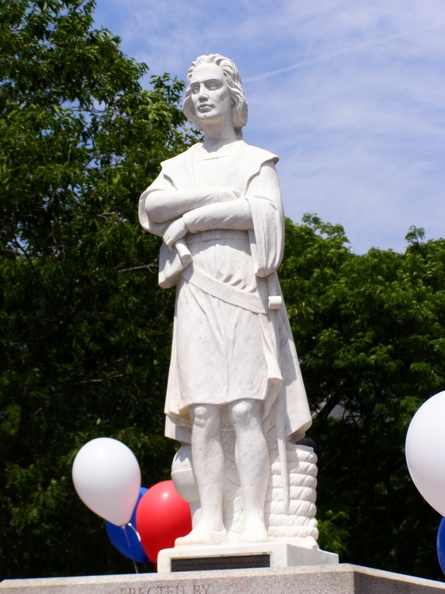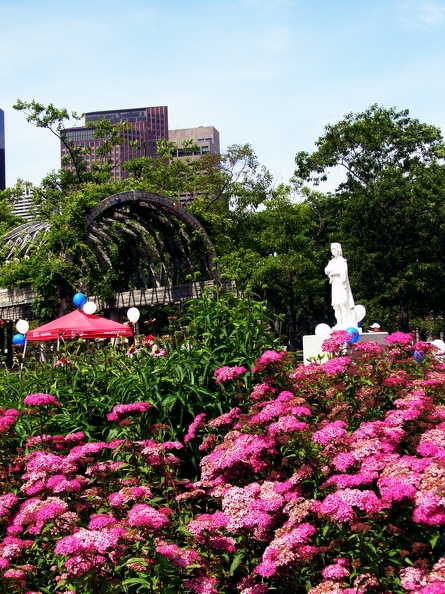I’ve written ad infinitum about the authoritarian, morally objectionable policies that governments around the world have implemented in response to the Covid-19 pandemic. While most people have mindlessly accepted, and even applauded, these policies, some individuals have had the courage and independence of mind to question them. This is a good thing and should be praised and encouraged. Disturbingly, however, our society and media have demonstrated a tendency to harshly criticize people who speak out against authoritarianism while letting the authoritarianism itself go unchallenged. Those who speak out against authoritarian governments are accused of using intimidation and bullying in an attempt to get their way, when it is the authoritarian governments themselves that are truly guilty of this. To many people, it seems, it is not enough for authoritarian policies merely to exist; every person who dares stand up to these policies must be silenced.
Protests in Michigan
To use an example from a few months ago, protests at the Michigan state capitol against stay-at-home orders were widely (and falsely) characterized as “intimidating.” These protests have been in the news again recently because of the arrests of several people for plotting to kidnap Michigan Governor Gretchen Whitmer. In an LA Times editorial, Scott Martelle equates the protesters, who did nothing more than express their views while possessing guns on their person, with the conspirators who plotted to kidnap the governor. He complains that the protesters “barged into the Capitol” and “intimidated legislators from their perch in the balcony gallery.” But by definition, people fighting back against an authoritarian government are not intimidating. It is the authoritarian government that is intimidating. If legislators are so frightened by citizens expressing opposition to policies that violate their rights, perhaps they should not have enacted those policies. But Martelle does not stop at falsely characterizing those who speak out against tyrannical policies as intimidating. When criticizing President Trump’s suggestion that Michigan loosen restrictions in response to the protests, Martelle writes, “Whatever happened to the notion that governments don’t negotiate with terrorists?” So in his view, not only are protesters who neither harmed anyone nor aggressed against anyone “intimidating;” they are also terrorists. Makes perfect sense. Not.
“Hanging” in Kentucky
A similar reaction happened when protesters hung an effigy of Kentucky Governor Andy Beshear back in May as part of a protest against that state’s stay-at-home order. In a bizarre overreaction, politicians and elected officials from both parties called the protest “wrong and offensive,” “disgusting,” “sickening,” “shameful,” “horrific,” “abhorrent,” “racist” (even though both Beshear and the person who hung the effigy are white), “seditious,” “appalling,” “vile and traumatic,” “inexcusable and shameful,” “despicable,” “unacceptable,” and “completely reprehensible.” The leading Democrats in the state legislature issued at joint statement calling the hanging of the effigy “beyond reprehensible” and “an act that reeks of hate and intimidation.” A column in a local paper described it as “terrorizing a family whose policies you might disagree with.” And Governor Beshear himself said on CNN: “I’m not going to be afraid. I’m not going to let these folks bully me or bully the state of Kentucky…. I will not let these folks that want to ultimately try to force or pressure and really create fear and terror, which is what they’re doing, to make us do the wrong things. They will not intimidate me or us.” He called the protest an “attempt to create terror for a small minority to get their way” and accused the protesters of “trying to bully everyone else into doing what they want us to do.”
So to sum up, in addition to using harsher language to describe the hanging of a cardboard cutout than I’ve seen used to describe the 9/11 terrorist attacks, the reaction to the effigy got things completely backwards. Protesting against a stay-at-home order was incorrectly characterized as intimidation, terror, pressure, and bullying when in reality, the stay-at-home order itself was all of these things. By telling citizens that they were not allowed to leave their homes and businesses that they were not allowed to operate, Beshear was the one using pressure, he was the one intimidating people, and he was the one being a bully. Beshear has no reason to brag about not being afraid or intimidated. It requires no courage for a governor (the most powerful person in the state) whose authoritarian policies are supported by the majority of people to “stand up to” a minority who are expressing an unpopular (but correct) view. While hanging an effigy is probably not the best way to get one’s point across, the protesters’ message was correct. Stay-at-home orders are morally wrong because they violate every person’s right to freedom of movement; objecting to them should not be dismissed as mere desire to “get one’s way” in a policy disagreement. For a bully to claim that his victims are the real bullies is truly offensive, wrong, shameful, and all of the other strongly negative adjectives that were used to describe the protest.
Criticism of Public Health Officials
Another example of protests against authoritarianism being criticized more harshly than the authoritarianism itself is a New York Times article about the backlash faced by public health officials during the pandemic. For example, according to the article, Dr. Barbara Ferrer, director of the Los Angeles County Department of Public Health, shared that a commenter “very casually suggested that I should be shot” during a public briefing on Facebook Live. Andre Fresco, director of the Yakima Health District in Washington, said that he has been called a Nazi, a Communist, and Gestapo. “I’ve been cursed at and generally treated in a very unprofessional way,” he complained. “It’s difficult.” Lori Tremmel Freeman, the chief executive of the National Association of County and City Health Officials, lamented that public health officials are “becoming villainized for their guidance.”
While death threats and profanity are never a good way to get one’s point across, people have every right to be angry about the authoritarian policies that governments have implemented. It is difficult to have any sympathy for people who have helped to enact, encouraged, or spoken in support of policies that violate people’s rights. Anyone who does this deserves to be villainized. And along with describing the death threats faced by government officials, the NY Times article wrongly characterizes protests near their homes as a form of intimidation. A California protester quoted in the article got it 100% right when she said: “Some people might have issues with that, that we took it to their house. But I have to tell you guys, they’re coming to our houses. Their agenda is contact tracing, testing, mandatory masks and ultimately an injection that has not been tested.”
Exactly. Those who take away the fundamental rights and freedoms of others have no right to complain when they face backlash, protests, and criticism. Public health officials quoted in the article express concern that due to the backlash against their policies, there will be difficulty finding qualified candidates for these jobs. Maybe this isn’t such a bad thing. Sacrificing individual rights in the name of safety is not a job that anyone should be doing.





